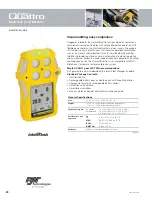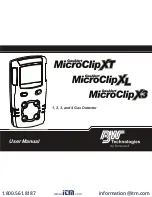
4.
Hold the search coil about two inches above and
parallel to the ground and move it slowly back and
forth across each sample. Remember, the coil must
be in motion to get a response. Keep in mind that
for accurate target ID, the coil center must pass
directly over the target.
5.
Note the response you get over small targets. For
small iron or steel targets, the meter needle will
usually lock in the “IRON” category. Most pull tabs,
foil, nickels and the newer zinc pennies will also be
correctly classified. Silver coins, copper coins, and
the newer clad coins will ID in the highest category.
6.
Note that an enlongated ferrous object such as a
nail will give you a double “beep” as you cross it
from end to end and a single “beep” if you cross its
center.
7.
Most silver rings will ID at the highest end of the
scale. If you have enough gold rings you will note
that some fall in the round tab category, some in
the “FOIL” category, some in the rectangular
category, a few in the nickel category, and very
few in the remaining coin categories. This is due to
the fact that the combination of size, shape and
conductivity of a particular ring will almost always
add up to a target that is electronically identical
to either a piece of foil, pull tab or nickel. Most
metal detectors have a difficult time separating
gold rings, nickels, tabs, and foil, but, the patented
circuitry of your CZ-5 can easily tell the difference
between nickels and most trash. Better yet, it will
allow you to find many types of gold rings while
completely ignoring at least some types of pull tabs
and small pieces of foil.
8.
Note also the different audio responses:
a)
an iron target will give you a low tone
b)
tabs and foil a medium tone
c)
coins a high tone.
9.
When you go over a large, shallow target the CZ-
5 will respond with a distinctive belltone. This is due
14
SEARCH MODES
Summary of Contents for M-Scope CZ-5 Quicksilver
Page 39: ...37...















































